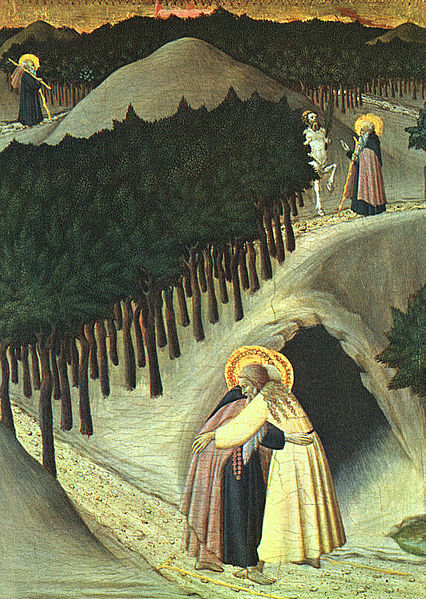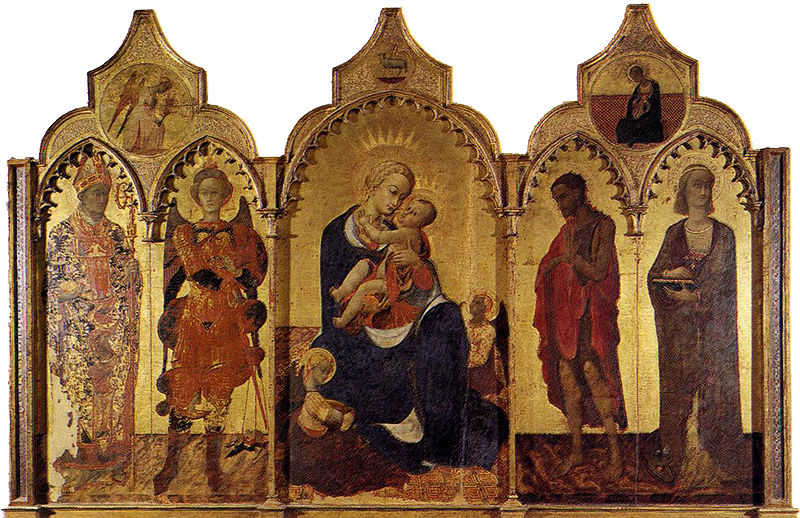Sassetta Biography (Stefano di Giovanni di Consolo)-Painting Artist:
Stefano di Giovanni di Consolo, known as il Sassetta (ca.1392–1450 or 1451) was an Italian painter who is considered one of the most important representatives of Sienese Renaissance painting.
Life and Panting Works:
The date and birthplace of Sassetta are not known. Some say he was born in Siena although there is also an hypothesis that he was born in Cortona. His father, Giovanni, is called da Cartona which possibly means that Cortona was the artist's birthplace. The meaning of his nickname Sassetta is obscure and is not cited in documents of his time but appears in sources from the eighteenth century.
Sassetta was probably trained alongside artists like Benedetto di Bindo and Gregorio di Cecco but he had a style all of his own. He achieved a high level of technical refinement and was aware of artistic innovations of talented painters in Florence such as Gentile da Fabriano and Masolino. His work differs from the late Gothic style of many of his Sienese contemporaries.
His first certain work, which originally had his signature is the Arte della Lana altarpiece, (1423–1426) fragments of which are now divided among various private and public collections.
The Madonna of the Snow altarpiece for the Siena cathedral was a prestigious commission for Sassetta, and considered his second major work. Not only does he excel at infusing his figures with a natural light that convincingly molds their shape, he also has an amazing handle on spatial relationships, creating cohesive and impressive work. From this point on, under Gothic influence, Sassetta’s style increases its decorative nature. The polyptych done by Sassetta in San Domenico at Cortona (around 1437) shows scenes from the legend of St. Anthony the Abbot. He shows great skill in narration through his painting as well as combining a sophisticated color palette and rhythmic compositions.
Francesco di Giorgio e di Lorenzo, better known as Vecchietta, is said to have been his apprentice.
He died by pneumonia contracted while decorating the Assumption fresco in the Porta Romana of Siena. The work was finished by his pupil Sano di Pietro.
Many consider Sassetta's fusing of traditional and contemporary elements as integral to the move from the Gothic to the Renaissance style of painting in Siena.
A Miracle of the Eucharist:
Miracle of the EucharistSassetta was a fiercely pious man. It has been said by Andrew Graham-Dixon that Sassetta's early fifteenth century painting of A Miracle of the Eucharist was not a work of art in the museum sense, but rather a threat: "Believe, or burn in hell forever.[4] The painting is about the "marriage of righteousness and violence" and the "consequences of sinfulness, the perils of feigning faith and the power of God."
The figure in black in the painting is an unbeliever, who has been found out in the process of receiving Communion. The officiating priest offers him the host on a plate, which is pictured miraculously spurting blood. The unbeliever has been struck dead instantly, and the creature above his face is a tiny black devil which has swooped down to snatch away his soul to the depths of Hell. The other men pictured are Carmelite monks, caught in expressions of shock, amazement and disgust. They have become acquainted with their vengeful and savage God and it was Sassetta's intention that all who entered the church shook in the presence of their lord. His aim was to equally inspire fear and faith. The painting is a "carefully staged, meticulously created illusion" which commemorates the Miracle of Bolsena which is said to have taken place in 1263.
Sassetta's Altarpiece of the Eucharist was later divided between three museums (British, Hungarian and Italian), the Vatican, and a private collection.
Refer to: http://en.wikipedia.org/wiki/Stefano_di_Giovanni
Edited by Kevin from Xiamen Romandy Art Limited.
(Xiamen Romandy Art is a professional oil paintings supplier from China. If you want to convert your photos into high quality oil paintings, or you want the masterpiece oil painting reproductions, please don's hesitate to contact with us.)
Romandy Art Website: http://www.oilpaintingcentre.com
Tags: Sassetta Biography (Stefano di Giovanni di Consolo)-Painting Artist.
|